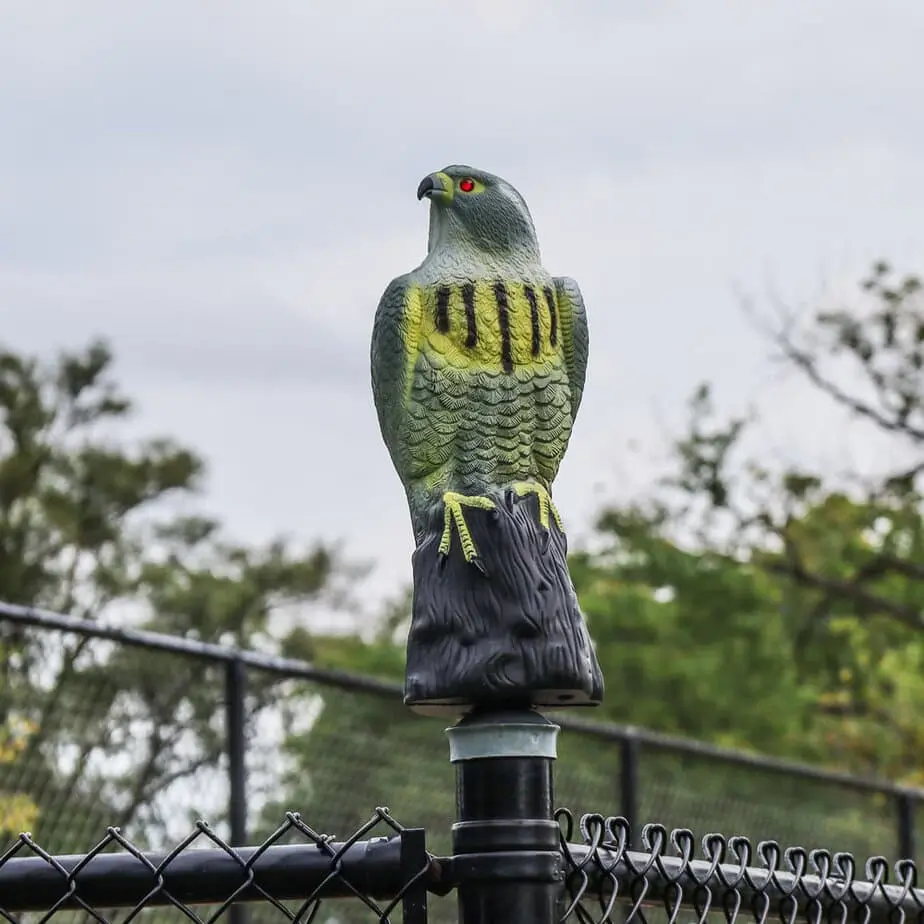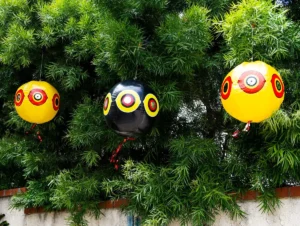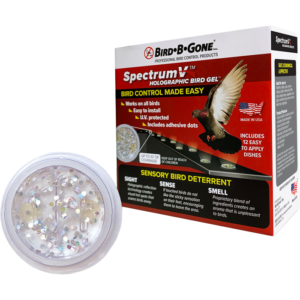A common issue that plagues solar installers and PV system owners is birds and rodents using solar panels as a nesting and roosting location. This behavior leads to damage to the PV system and underlying building, and ultimately reduces the return on investment of a solar system.
By now, most solar technicians are familiar with physical barrier products (commonly known as “critter guard”) which seal off the vulnerable underside of a PV array, preventing the worst outcomes. Unfortunately, if nesting had already begun before the animals were evicted, the animals may return even after their nests have been cleared and critter guard installed. To give critters an extra incentive to leave, there are a range of specialized deterrent products on the market.
For this article, Slick Tools reached out to our professional solar cleaning customers and asked which deterrents worked best for them. We learned a lot, and hope you do too!
Special thanks to:
- Brendan Khanzada from Solar Sparkle Plus in Fort Collins, CO
- Jesus Zapata from FXO Solar Cleaning in Las Cruces, NM
Types of Deterrents
There are a few major types of deterrents, each with their own benefits and drawbacks. The categories are scent, sound, movement, visual and physical obstructions. There are more (and less) sophisticated solutions, such as lasers and the good ol’ .22; but they aren’t generally used in residential applications, which is our focus here.
Scent
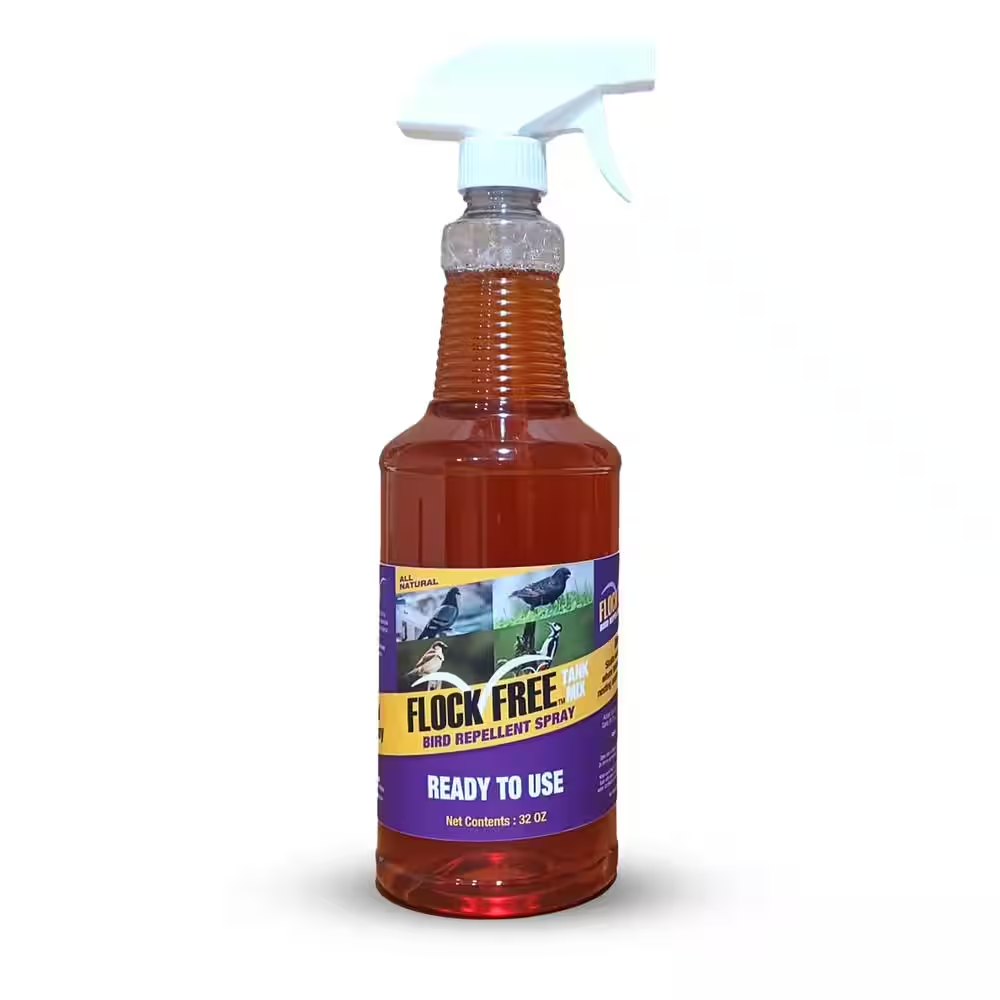
- Products: Misters, pucks with gel, sprays
- What it is: Misters are machines that detect an animal approaching and spray a fine mist of an unpleasant substance to deter the critters. Gel pucks are Petri-dish-looking devices filled with a smelly goop that sometimes contains reflective particles. Sprays are applied by a human via a spray bottle and mimic predator urine or other smells that are unpleasant for critters.
- Effectiveness: Generally not long-lasting, but can be quite effective right after application.
- Concerns: May wash away with rain. Could be a nuisance to people and pets.
Sound
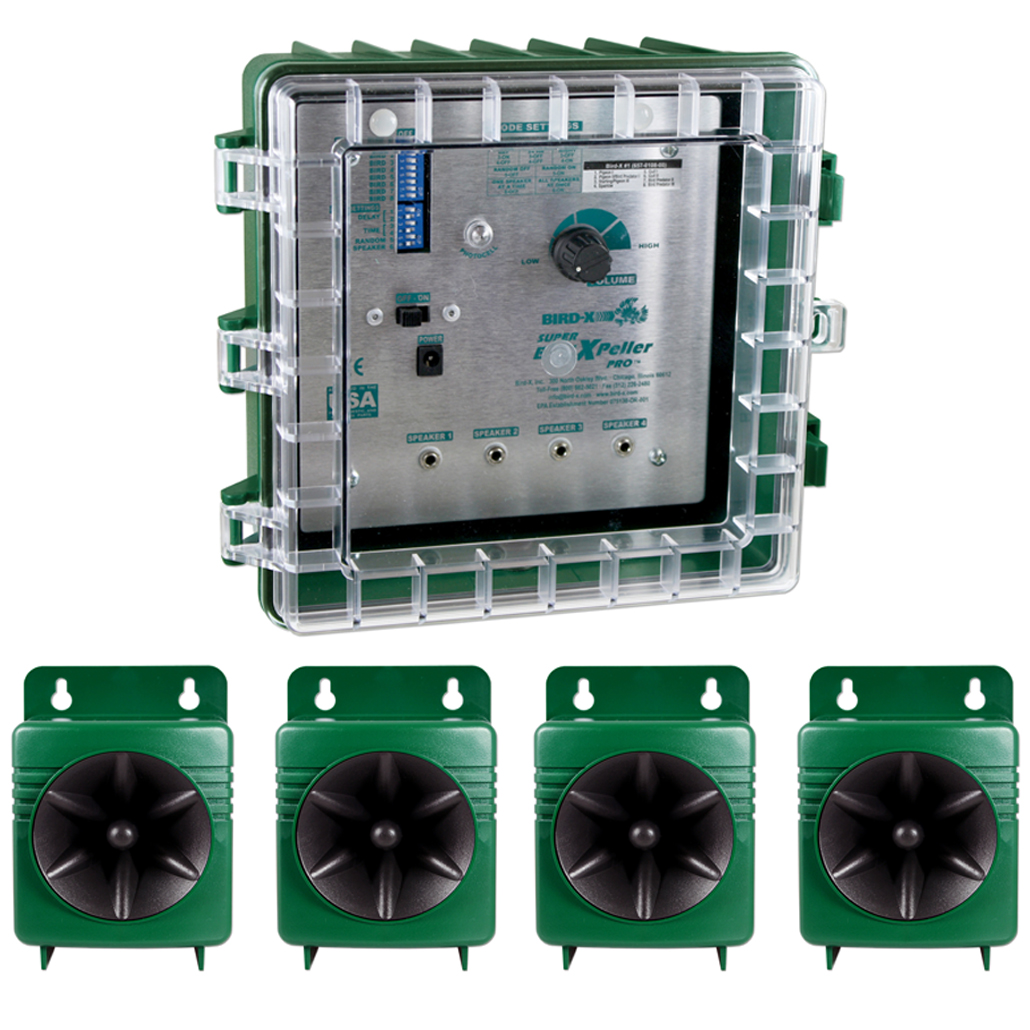
- Products: Speakers
- What it is: A device that plays a loud noise to frighten animals
- Effectiveness: Can be very effective
- Concerns: Some birds get used to the sound, rendering it obsolete. May be a nuisance to people and pets.
Movement
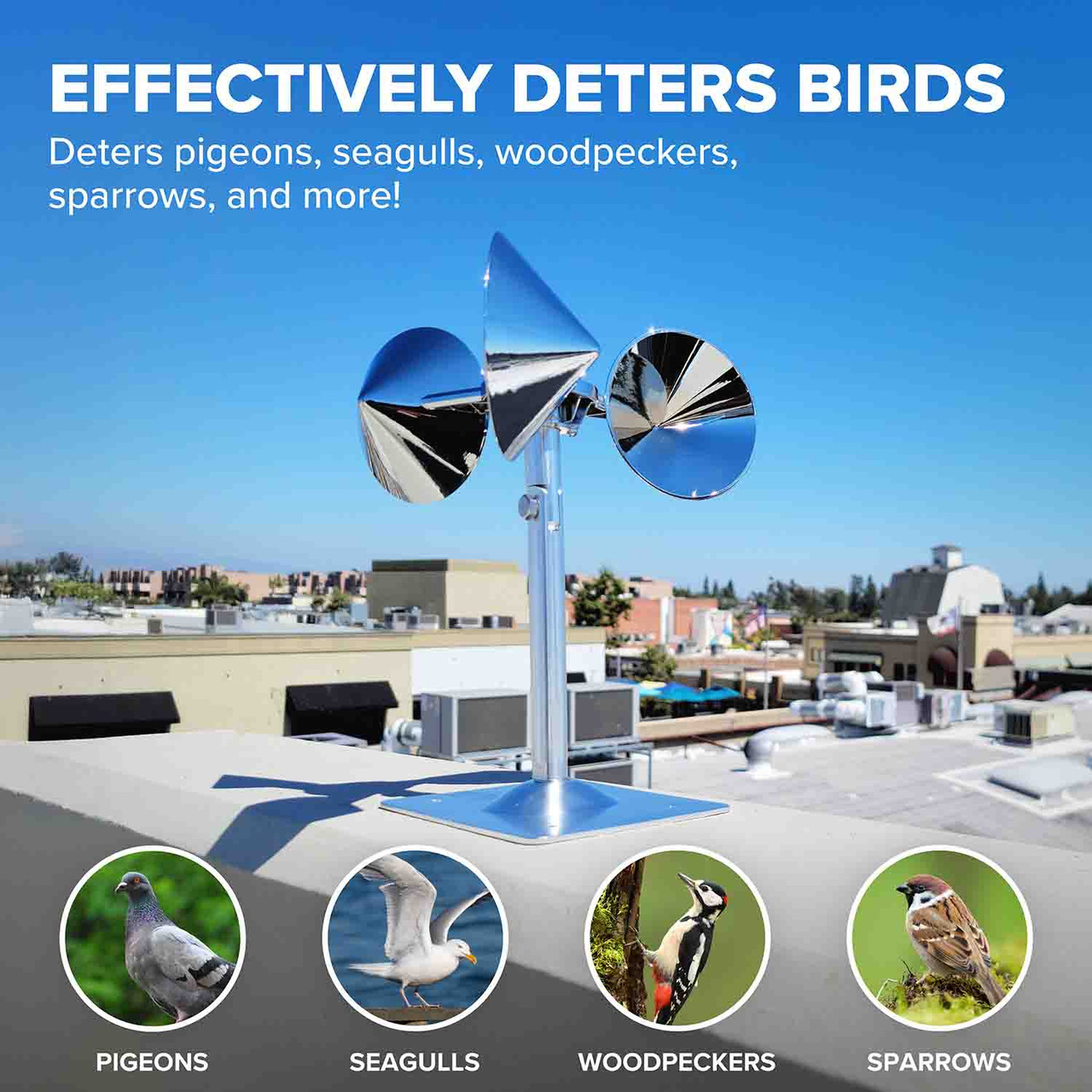
- Products: Spinners, reflective tape, gel dishes with sparklers
- What it is: A range of spinning or reflective devices that create motion and flashes of light to deter animals.
- Effectiveness: Can be very effective
- Concerns: Critters may adapt to and ignore the deterrent over time. These deterrents can be quite discreet, but there are some that could hurt the curb appeal of a property.
Sight
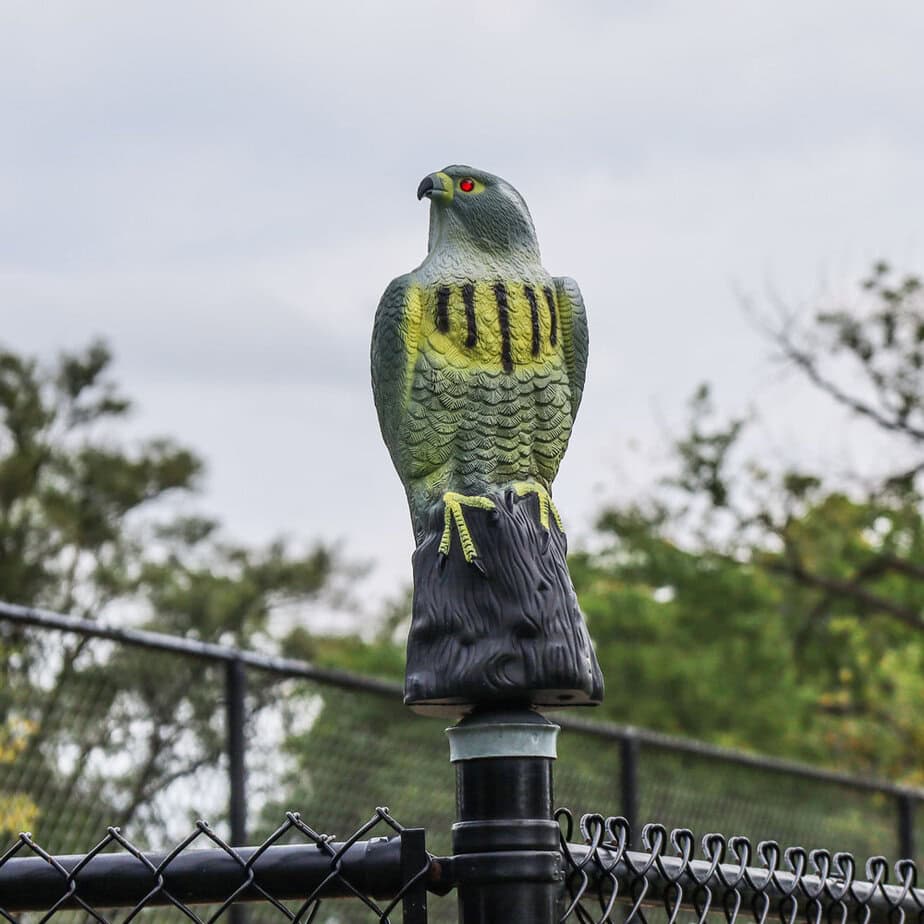
- Products: Predator decoys, predator eye balloons
- What it is: Plastic decoys of owls and hawks, or large balloons that mimic eyes
- Effectiveness: Can be effective, but some animals adapt to them over time.
- Concerns: May hurt curb appeal. Some homeowners are as put-off by a pair of giant eyeballs on their roof as the birds.
Physical obstruction
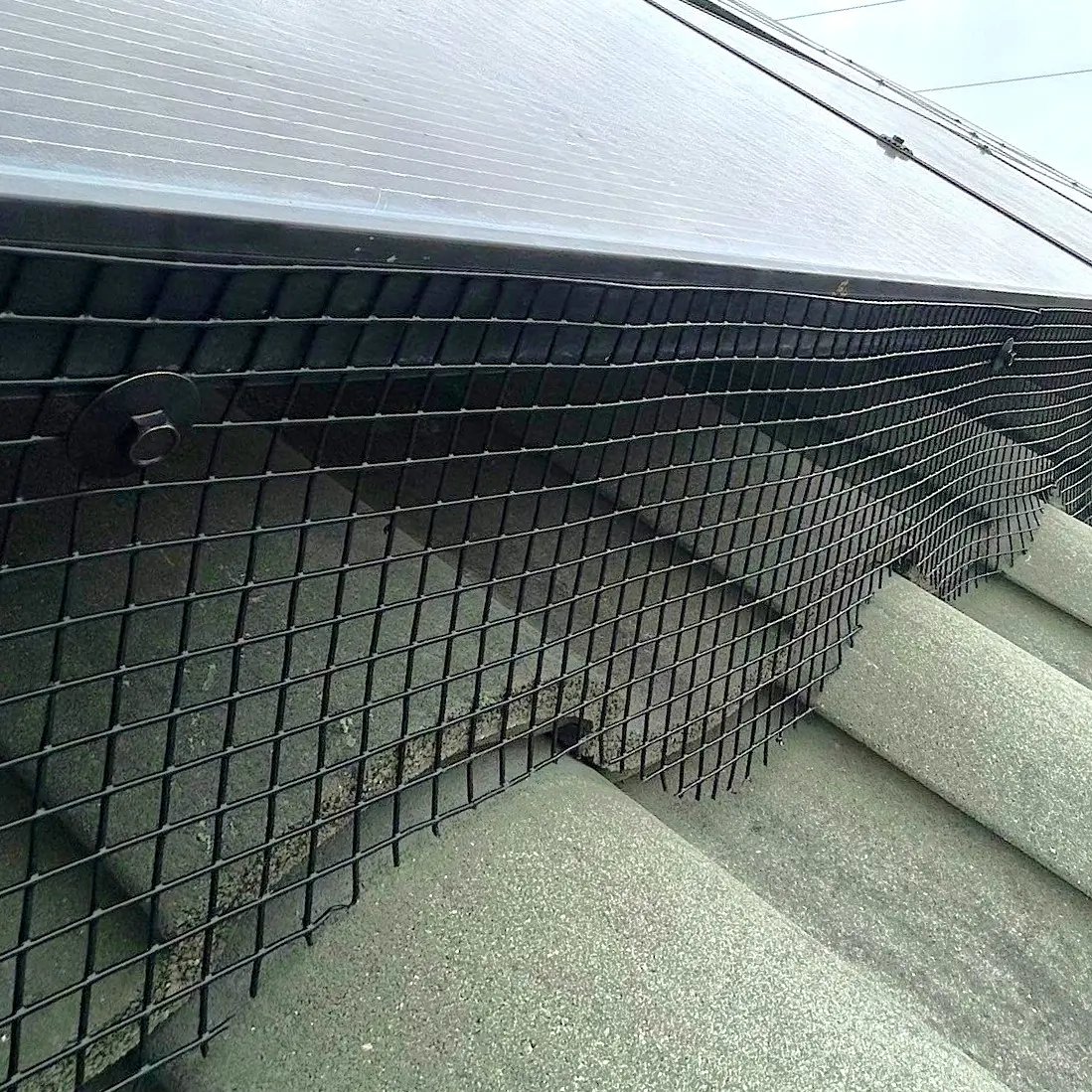
- Products: Bird spikes, sticky gel and critter guard
- What it is: Devices that prevent birds or rodents from accessing certain spaces by blocking them with spiky obstructions, sticky substances or fencing
- Effectiveness: Very effective if installed carefully, but only in a specific region of the roof/array.
- Concerns: Spikes have been known to create a better structure for pigeon nests. Gels dry out over time. If fencing is installed poorly or with the wrong fasteners, it can be breached by determined critters. On a complex roof, it’s virtually impossible to address every surface.
Brendan emphasized the persistence of pigeons: “Pigeons are homing birds, so they always return to their nest, even after you clean it and install critter guard.”
Geographical considerations
In talking to technicians in the field, we found that each had a different opinion about deterrent effectiveness, and sometimes their experiences were contradictory. We chalk this up to the fact that, much like the weather, there are huge variations in critter behavior and the roof environment from region to region– and sometimes even between adjacent neighborhoods due to differing roof types and vegetation.
For example, gel scent dishes are known to dry out and get dusty, so they might be less suitable in the southwestern US. Jesus from FXO Solar Cleaning in New Mexico pointed out that “optical gels don’t last as long in the southwestern US. They get dusty and the sun destroys them after a while. I have watched a flock of pigeons not land after installing them though, so they definitely work.”
Spinners, on the other hand, are often powered by small, dedicated solar panels, which may not make them as effective in the Pacific Northwest. Scent deterrents are diminished by rain, so areas that see less precipitation could benefit from these deterrents for longer.
Building a Pest Eviction Game Plan
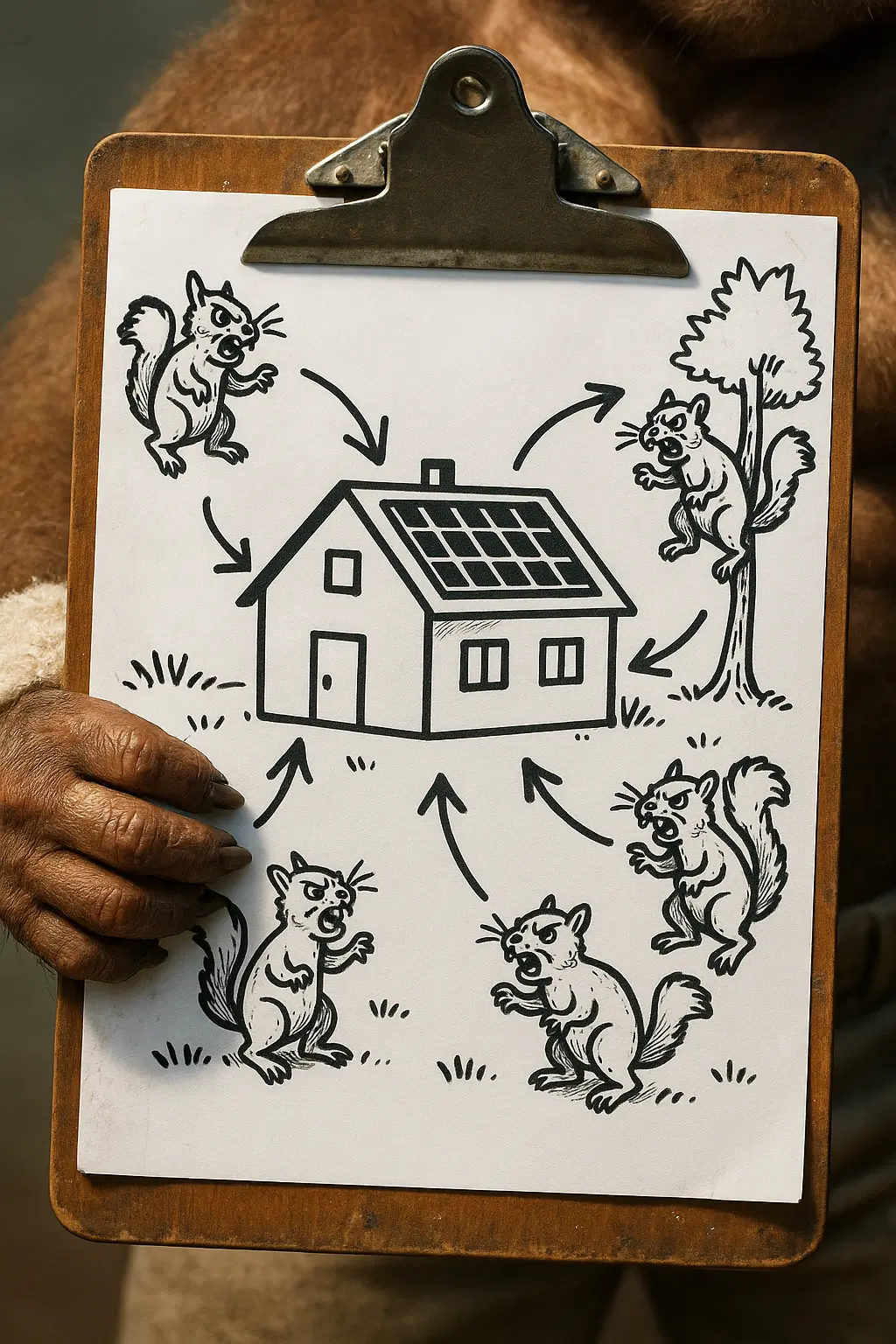
You know the options at your disposal. Now how should you go about building a pest eviction strategy?
Step 1: Seal Off the Array Perimeter
The top priority of a homeowner/technician should be to keep critters out from under the PV array. The protected nesting space under the array is usually what drew them there in the first place, so if you remove access there’s a good chance they will just leave. Critters and the nests and droppings are much costlier to remove if they’re under the PV array, and they pose a threat to the PV wiring which cannot be fixed with a simple cleaning. Fortunately, carefully-installed fencing can effectively seal off the array, and should therefore always be the first line of defense. Deterrents are a second step that may be necessary in certain cases for tenacious critters. They’re less reliable than fencing, but are worth getting familiar with, especially if you’re dealing with an active infestation rather than preventative critter-proofing.
Step 2: Leave No Trace
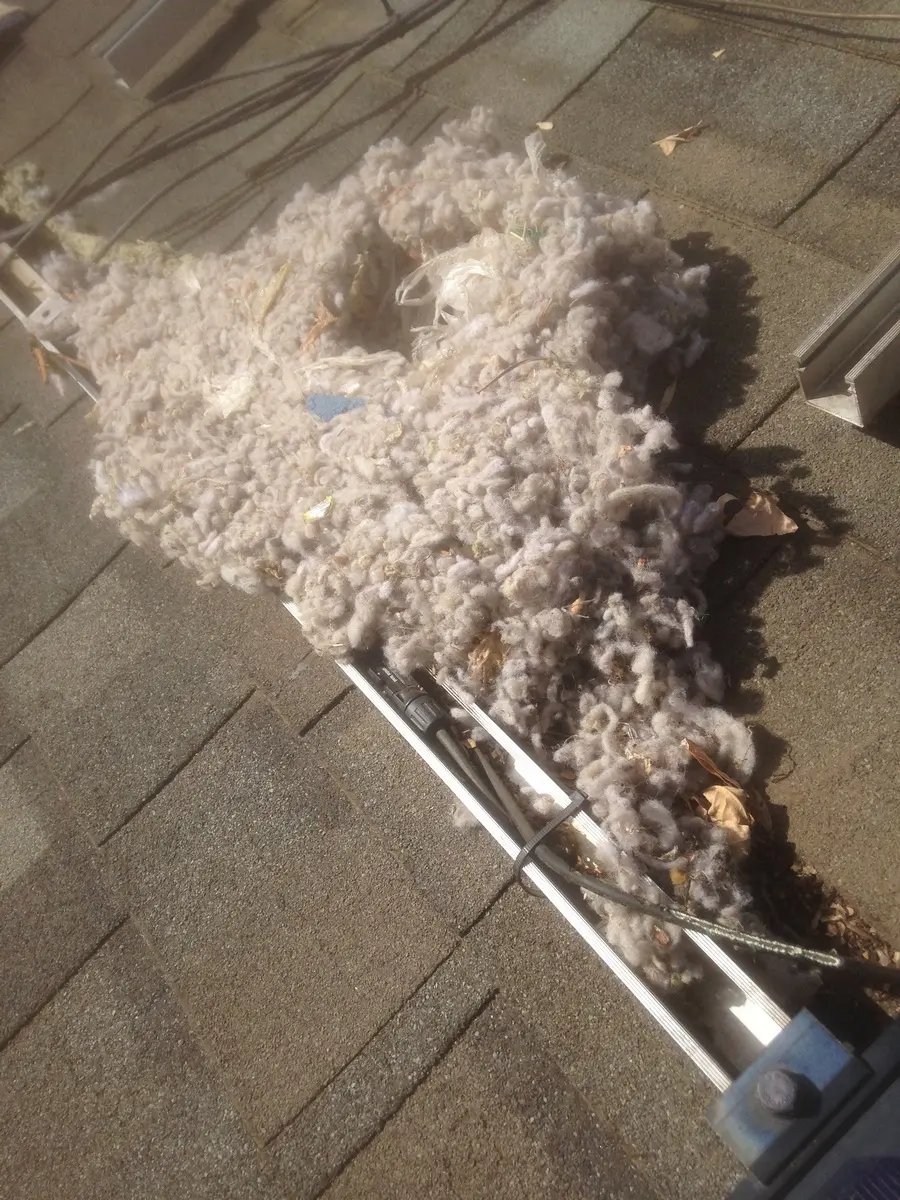
Jesus in New Mexico said it best: “The better you clean a roof, the fewer birds come back.” Critters may be attracted to the scents they left behind. The more thoroughly you remove their excrement and nest remnants, the less it will feel like home.
Step 3: Multi-Pronged Deterrence
In many cases, your job is done after step 2. If you find yourself with tenacious critters, it’s time to try at least two different categories of deterrent (e.g. scent and sight). If there’s one thing the technicians we interviewed could agree on, it’s that a single deterrent probably won’t get the job done.
As Brendan from Solar Sparkle Plus in Fort Collins put it, “I’ve noticed that pigeons aren’t scared of some deterrents anymore and that you have to install several different types on one roof to keep the birds away.”
Step 4: Sense and Respond
It may take a few tries to find the combination of deterrents that works best for your climate, critter type and roof/array type. The good news is, once you’ve found a successful combo for your situation, it will likely work well the next time you encounter a similar job.
To summarize, there are many critter deterrents on the market targeting each of a critter’s senses (sound, sight, smell, touch, taste). A physical barrier to seal off the underside of a PV array is the best way to prevent and respond to an infestation, but sometimes deterrents are a necessary second step. By considering your specific geographical circumstances and using several different deterrents at once, you’ll increase your chances of successfully giving unwanted critters the boot.

